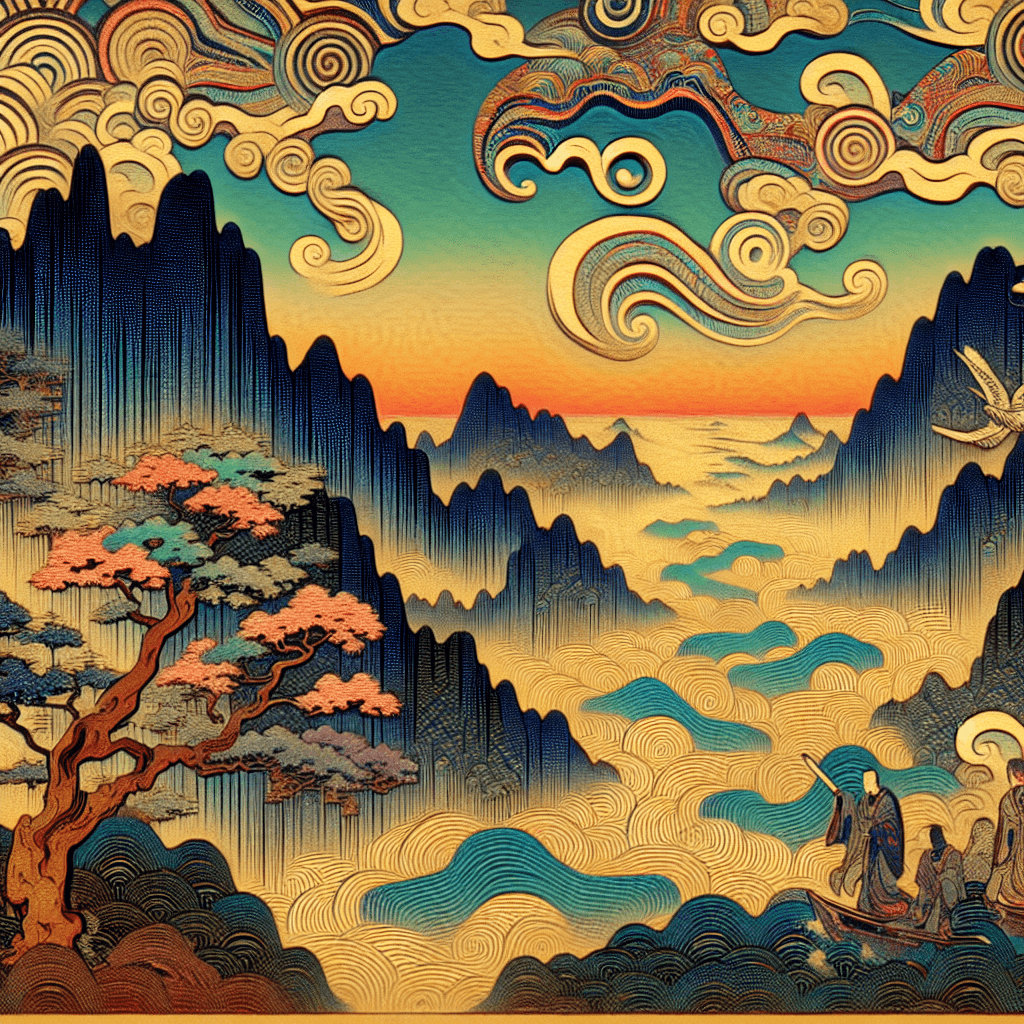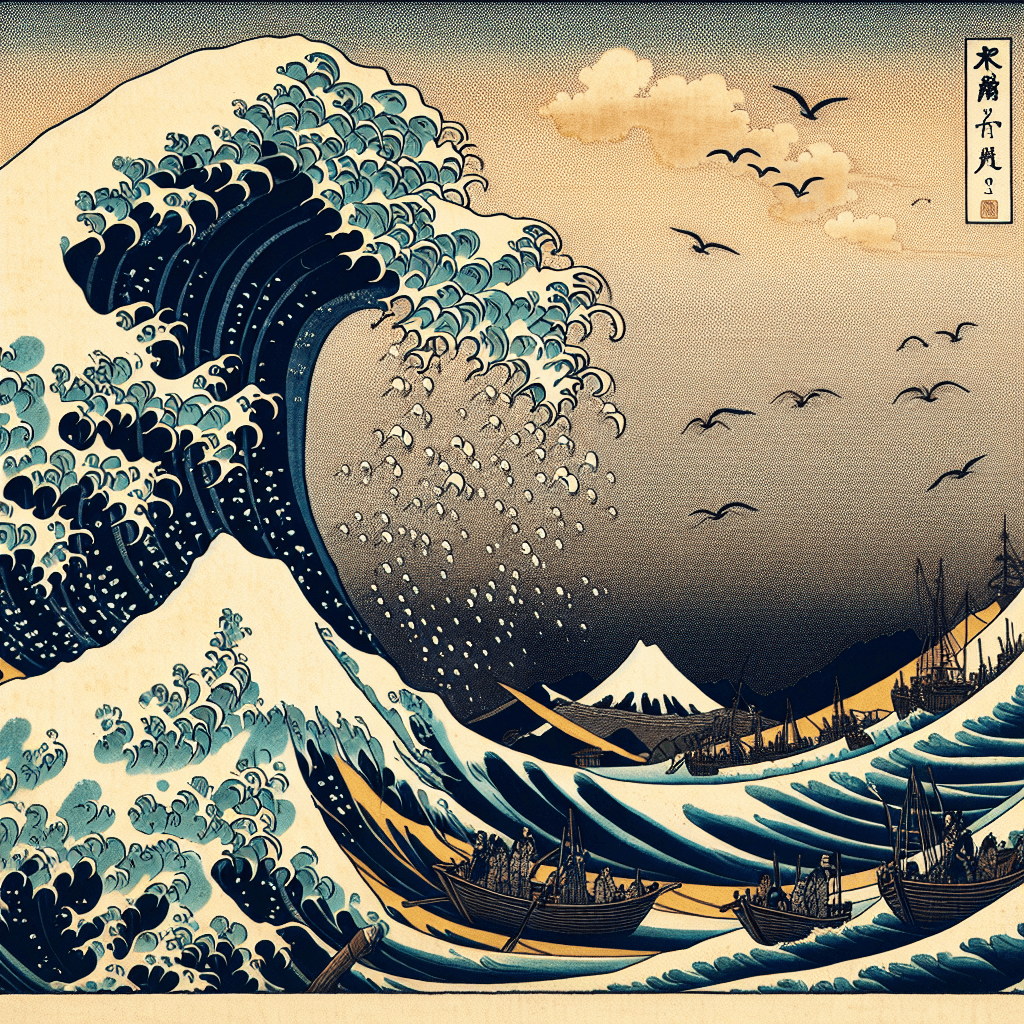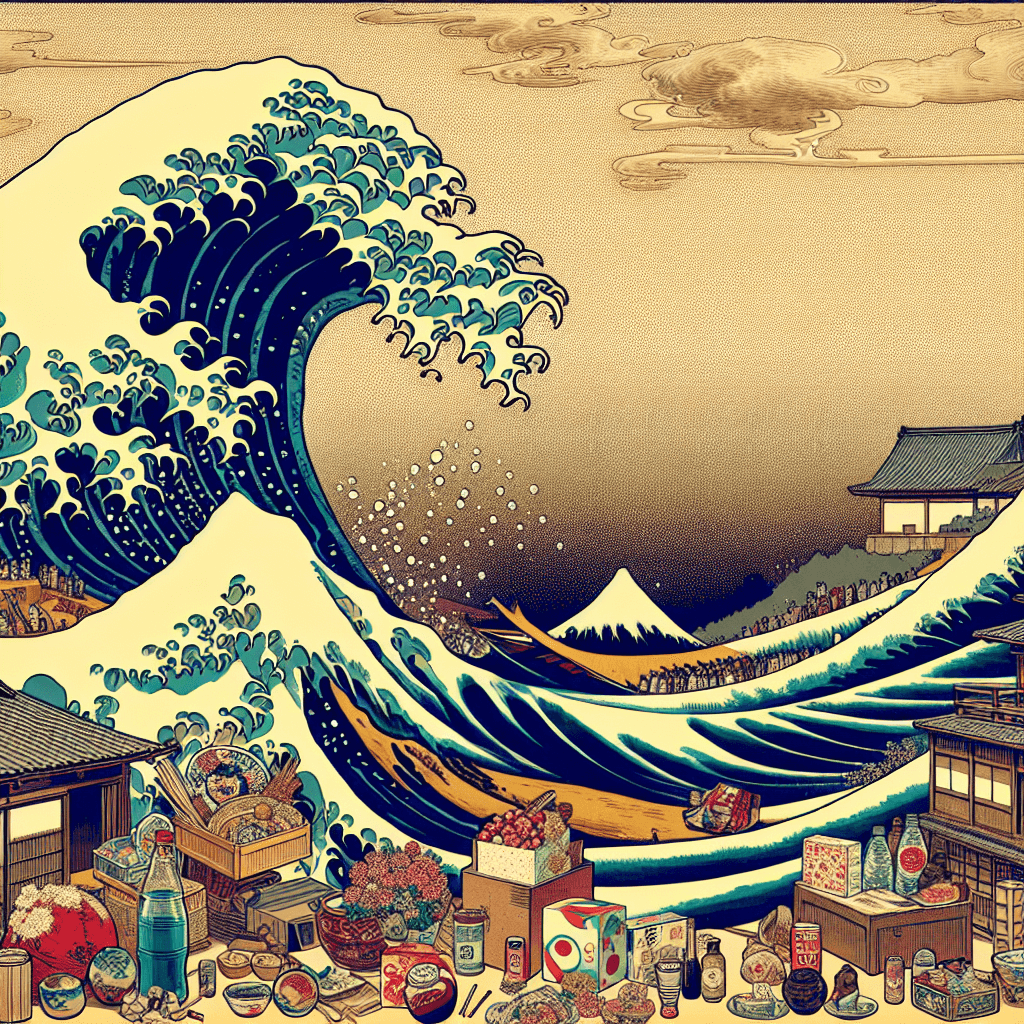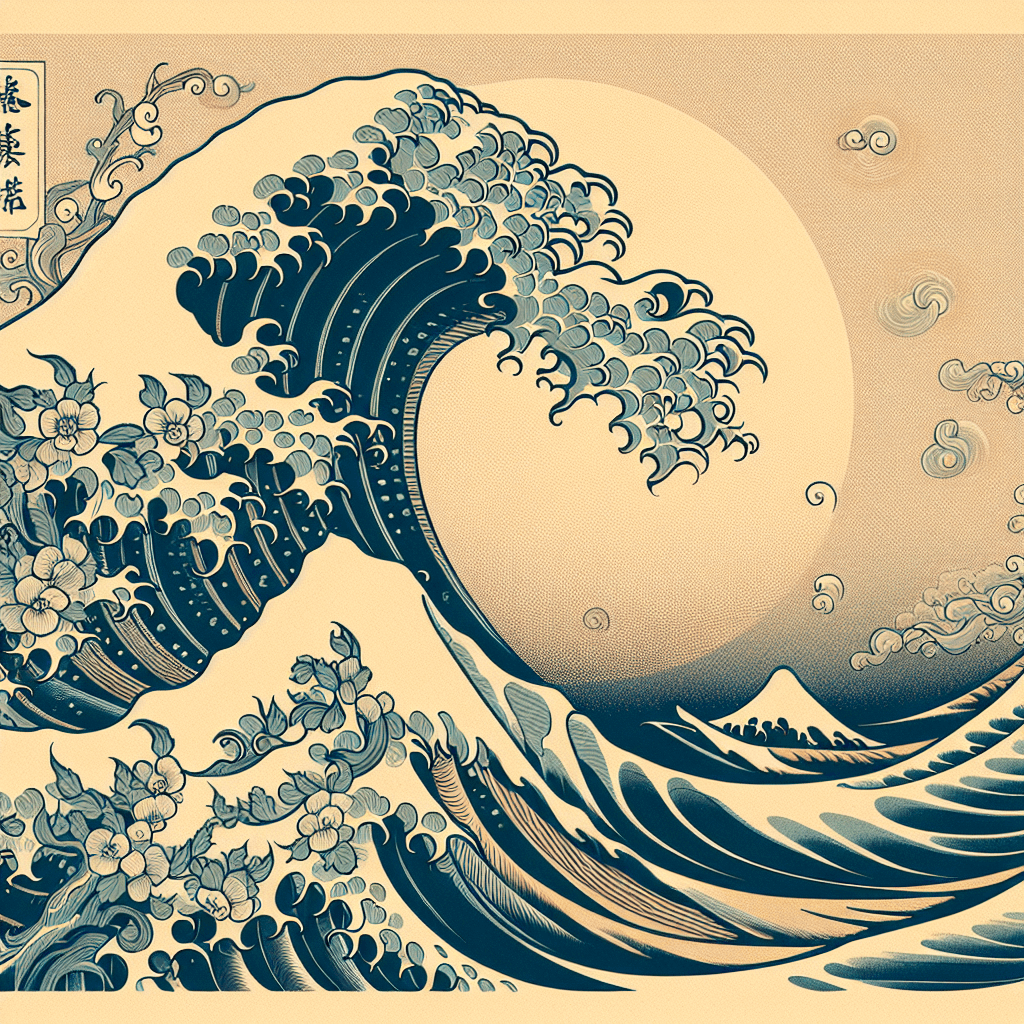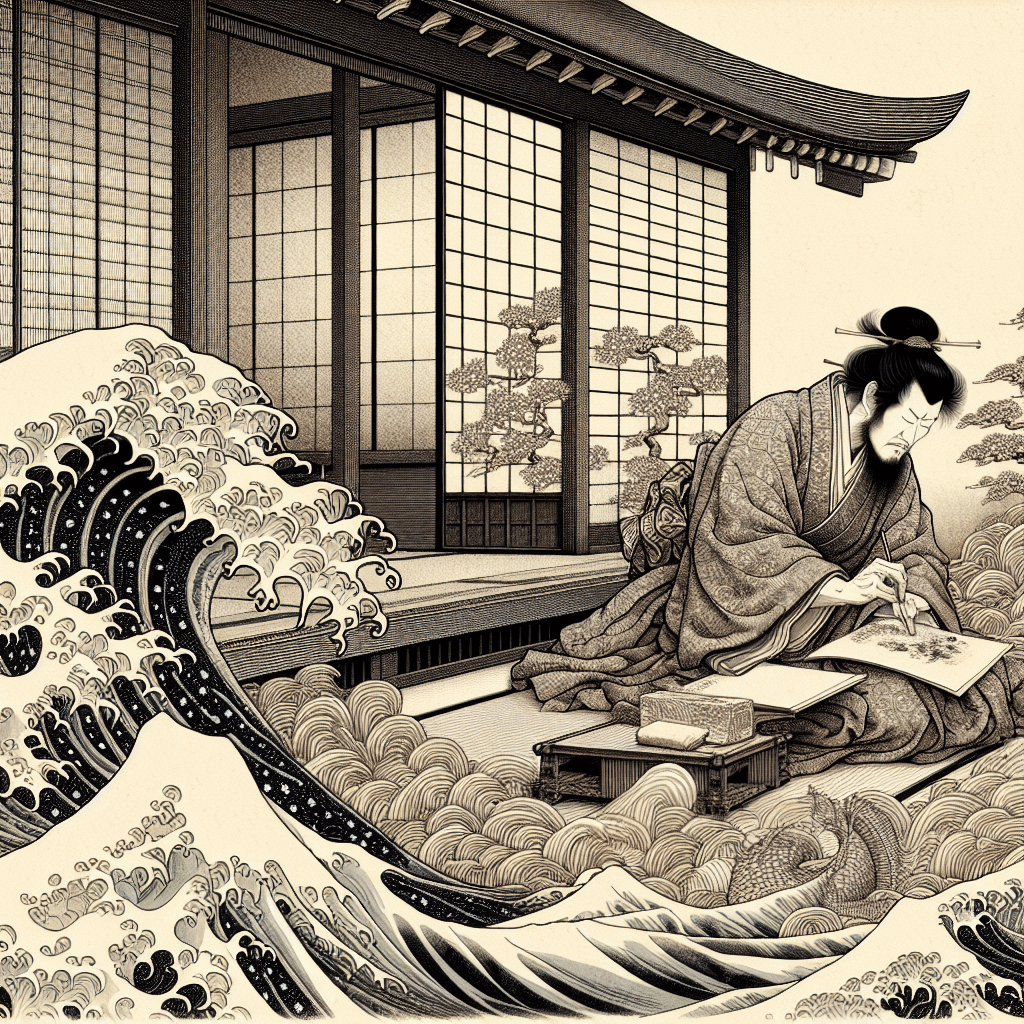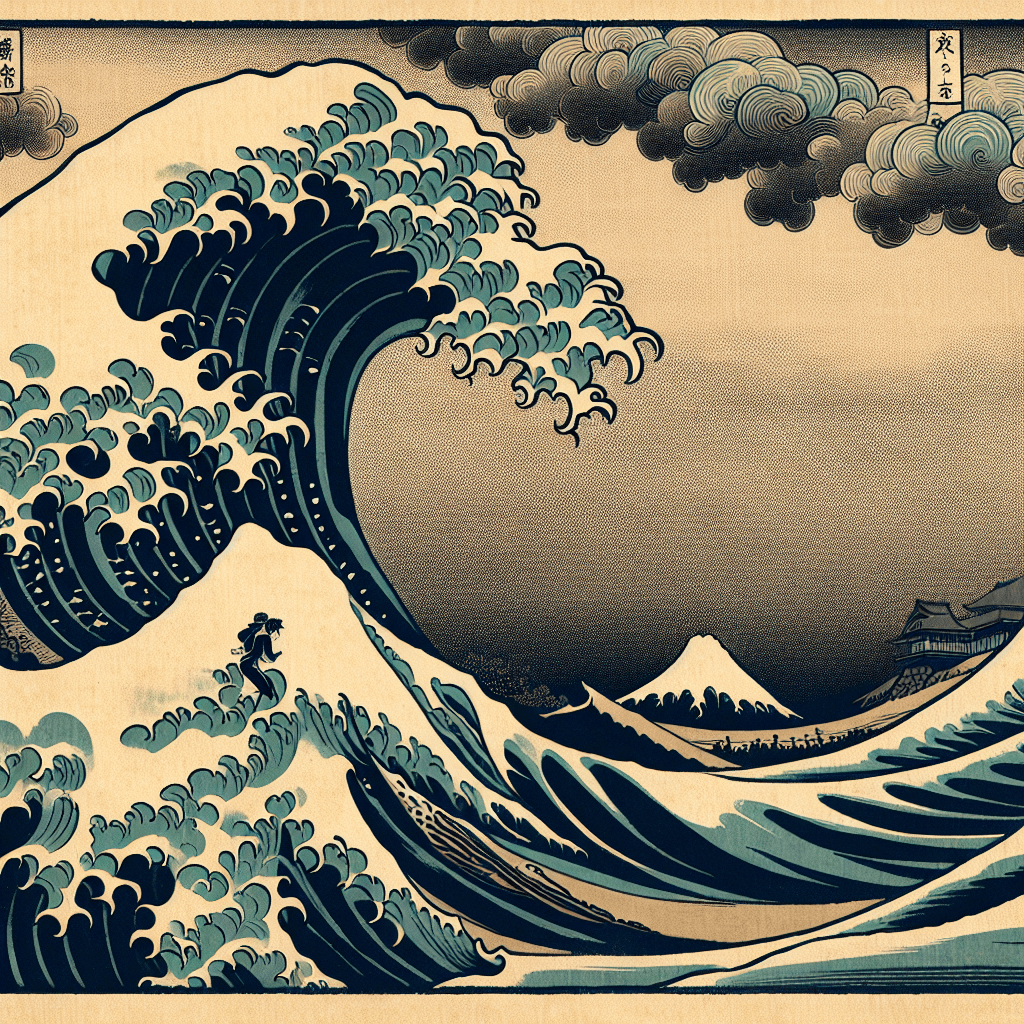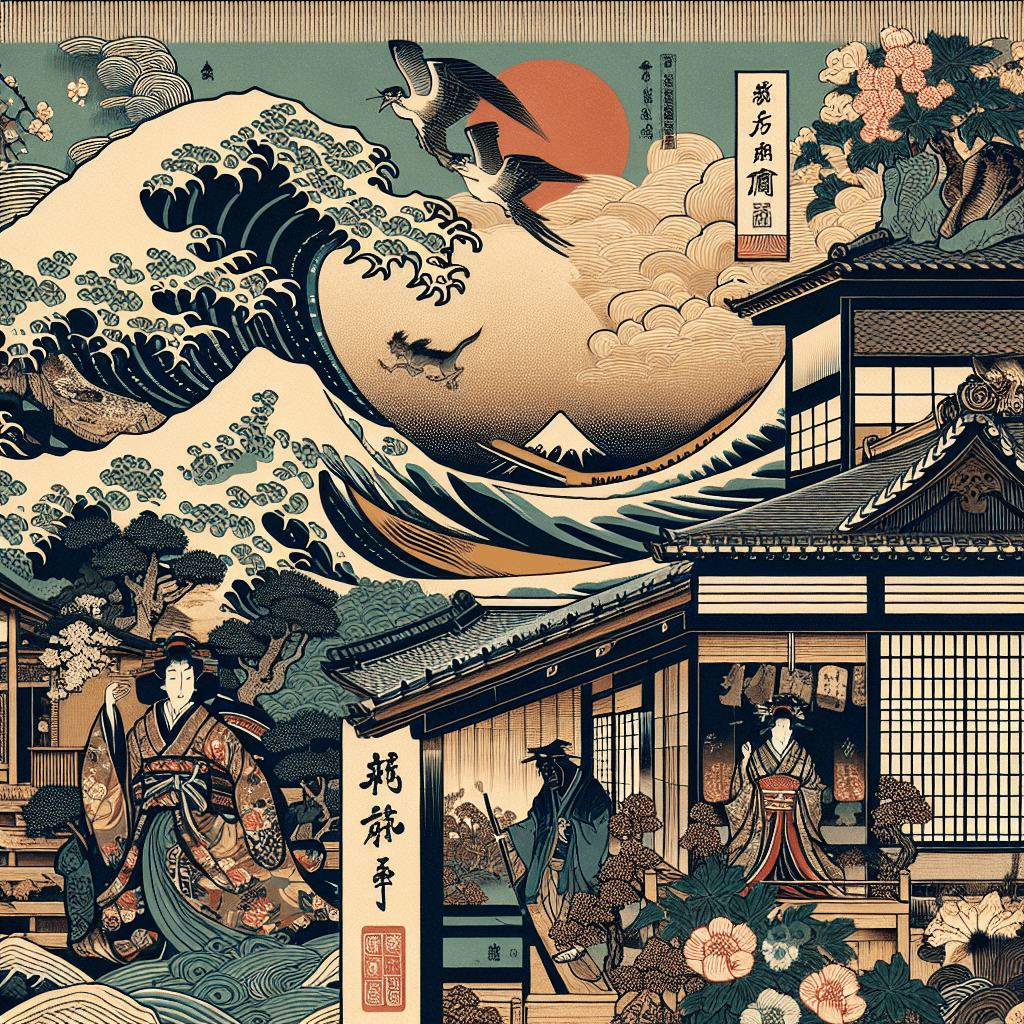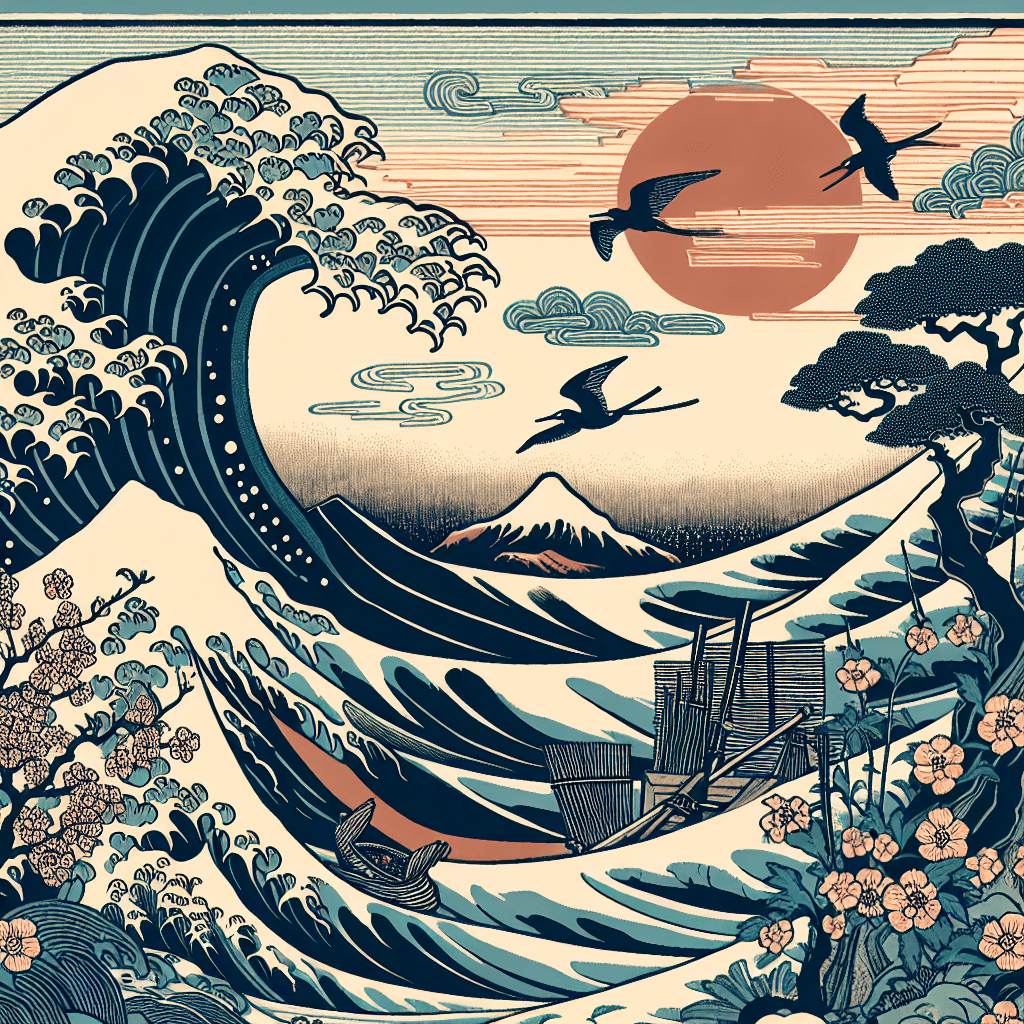Mastering the Wave: The Artistry and Technique Behind Hokusai's Iconic Work
syndu | Nov. 4, 2023, 11:43 a.m.
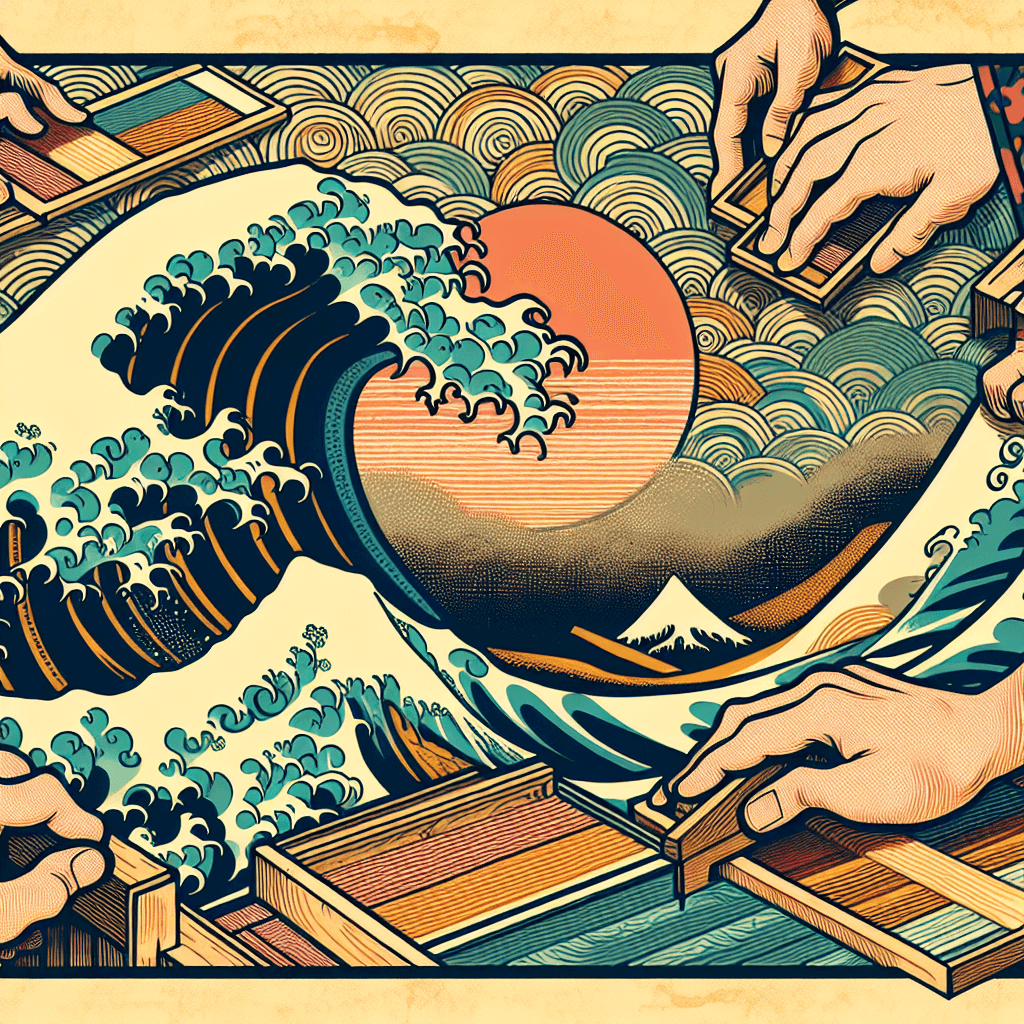
The Great Wave off Kanagawa: A Masterpiece of Ukiyo-e Art
"The Great Wave off Kanagawa" is arguably the most iconic work of Katsushika Hokusai, a renowned ukiyo-e painter and printmaker of the Edo period. The creation process of this artwork is a testament to Hokusai's mastery and the intricate techniques of ukiyo-e woodblock printing.
The artwork was created using the ukiyo-e woodblock printing technique, a traditional Japanese art form that involves carving an image into a block of wood, applying ink, and then pressing the block onto a sheet of paper. This process is repeated with different blocks for each color, requiring a high level of precision to ensure the layers align correctly.
Hokusai's choice of materials also played a significant role in the creation of "The Great Wave off Kanagawa". He used a type of paper called washi, known for its durability and absorbency, qualities that are ideal for woodblock printing. The inks used were vegetable-based, which allowed for a wide range of vibrant colors.
The historical context in which "The Great Wave off Kanagawa" was created is also noteworthy. It was produced during the Edo period, a time of relative peace and prosperity in Japan. This era saw a flourishing of the arts, with ukiyo-e, in particular, gaining popularity. Hokusai's depiction of the powerful wave, with Mount Fuji in the background, can be seen as a reflection of the Japanese people's reverence for nature and their awareness of its power and unpredictability.
In conclusion, the creation process of "The Great Wave off Kanagawa" involved a combination of intricate ukiyo-e techniques, durable and absorbent materials, and was influenced by the cultural and historical context of the Edo period.
